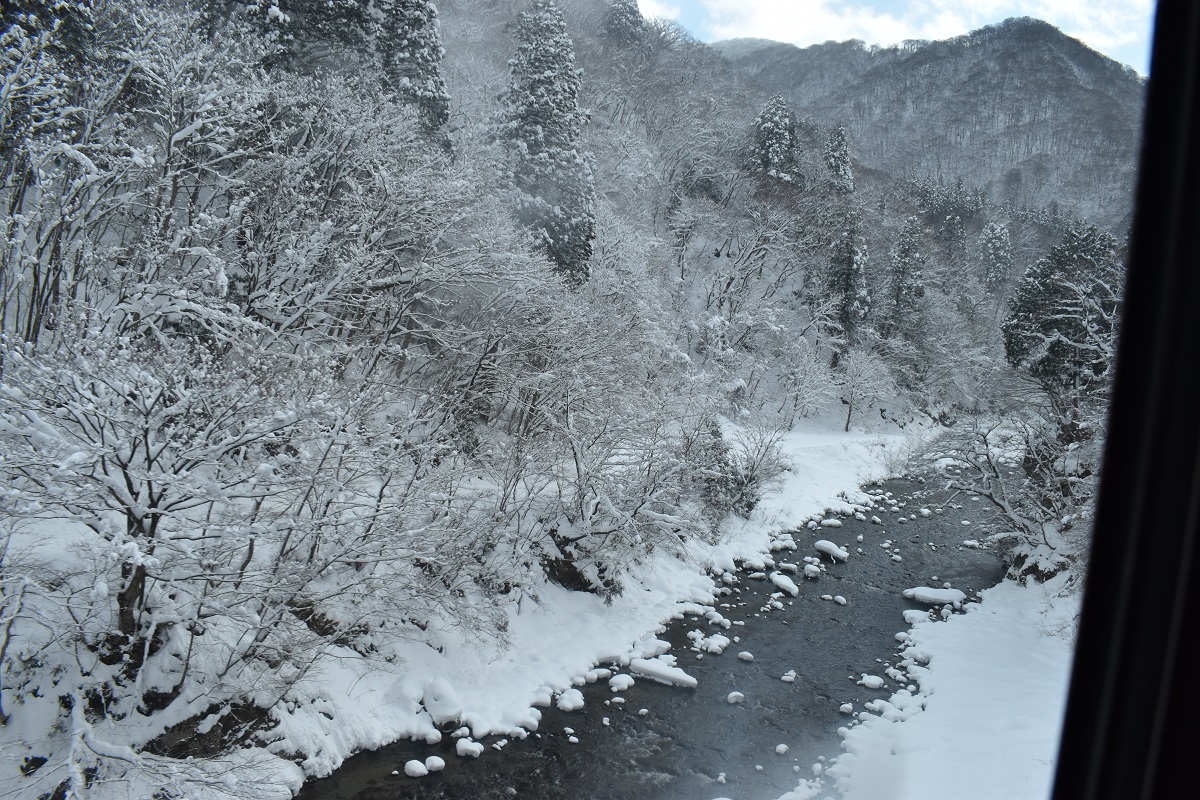

A walking tour with a guide (no charge) is held every morning at the hotel ‘Kyounso’ where we stayed at Matsukawa Hot Spring of Hachimantai. Extensive explanation and stories over one hour before breakfast made us feel rich nature of Hachimantai. The following stories, for example, are very attractive !

<Story 1> (photo 14)
Each beech tree is stored 8-tone water under the ground through the mechanism of the shape of a leaf and water passage on a trunk . So landslide or wildfires do not occur in the beech forest, and they are naturally digested even if they are bonfired or left in the forest. It would be an overstatement to not extinguish the bonfire.
<Story2>
Why is the beech tree growing straight and thick, but not suitable for building materials? It has the property that it cannot grow easily because it is covered with bamboo grass when it is small, and it grows all at once when the bamboo grass dies in about 50 years. As a result, the beech grows straight and large, creating a genuine beech forest like the Shirakami Mountains. Therefore, the center of the annual ring is dense (that is, hard), and the outside of the annual ring is sparse (that is, soft), so it is not suitable as a building material. It is the only building material used in the main hall of Yamadera, Rissyaku-Temple, in Yamagata Prefecture, so be sure to take a closer look before heading to the summit if you go there.

<Story3> (photo 9)
The raw material for Japanese paper is said to be Kozo-mitsumata, but glue is required to bond the fibers. It can be collected from the tree “Nori Utsuri”(see photo 9 below), as the name literary “glue transfer”.

<Story4> (photo 10)
The “Kuro-moji” tree (see photo 10 below) is a material for high-class toothpicks used when eating Japanese sweets in the tea ceremony. Kuro-moji tree is a relaxing fragrant tree and is said to relieve the tension of the tea ceremony.
<Story 5> (photo 13)
A maple designed for Canadian flag colors the forest as autumn leaves. The size of leaves in Japan are small and the Japanese name ‘KAEDE’ came from a flog(‘KAERU’)’s hand(‘TE’), ‘KAEru-no-T(D)E’.

<Story6> (photo 17)
“Honoki” (see photo 17 below) is a material that is neither hard nor soft. Therefore, it is used as a material for cutting boards that do not lack the teeth of kitchen knives and clogs (wooden shoes) with good cushioning.
I was told a lot of plant names and useful stories, but I couldn’t remember them because of the capacity of my brain.
Walking Route(click photo)





















